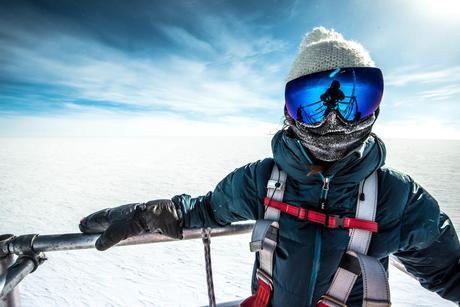Several countries are targeting the moon as a destination beyond Earth for long-term human presence.
NASA is once again touted to get another literal 'stepping stone' to the moon through its Artemis program. the way to trump and train for marching to Mars. In many ways, such a future endeavor could be compared to Antarctica, home to many remote research stations. During the summer months about 5,000 people live in research posts, a number that drops to about 1,000 in winter.
Antarctica is governed by approximately 30 countries, all of which are parties to the 1959 Antarctic Treaty System.
Could that bleak, distant Arctic landscape serve as a template for working on the moon, or even offer lessons in how best to collaborate in austere, remote environments?
Related: Cooperation on the Moon: Are the Artemis Accords Enough?
White March
An overview of Antarctic activities includes the French-Italian research station Concordia. The inhabitants are subjected to almost complete isolation from the world, and under hostile conditions. These climates are simply ideal for the European Space Agency (ESA).
ESA, a multi-country organization, has sponsored the work at Concordia over the years. "Antarctic research at Concordia helps people adapt mentally and physically to a changing climate, longer space travel and ultimately life on another planet," notes ESA, giving it "analogue" status and the location as "White" labels. Mars."
There is also China's newly installed fifth scientific research station in Antarctica, the country's third year-round station in the region. It will accommodate up to 80 researchers, who will conduct atmospheric, oceanic, biological and ecological studies.
The new Chinese complex builds on the four other Antarctic research stations; Changcheng and Zhongshan are year-round stations, Taishan and Kunlun are summer stations.
In terms of its lunar ambitions, China is already in deep space planning mode, with Russia seemingly on board with the deployment of an international lunar research station.

IceCube - a collaborative affair
Scientific equipment located in Antarctica does some pretty tough work, such as detecting neutrinos - a fundamental but difficult particle to pin down.
Jim Madsen is director of the Wisconsin IceCube Particle Astrophysics Center, or WIPAC. They operate the IceCube Neutrino Observatory - the first detector of its kind - designed to observe the cosmos deep within the Antarctic ice.
An international group of IceCube researchers conducts scientific work using the facility, a collaborative affair.
"The international treaty guidance activities in Antarctica can serve as a model for establishing a sustainable, successful international lunar base," Madsen told Space.com. Gaining consensus on the range of possible projects, and then getting buy-in with real resources, will keep all partners involved, he said.
"Moving from exploration to a year-round base to a platform for discovery was the path taken at the South Pole," says Madsen. "It's exciting to see similar progress in space."
Geostrategic maneuvering
But for those countries looking to establish a long-term presence on the moon, there may be factors at play in that ominous celestial real estate, which are similarly manifested in Antarctica.
That's the perspective offered by Marigold Black, lead author of the RAND Corporation report "Antarctica at Risk: Geostrategic Maneuvering and the Future of the Antarctic Treaty System." The report was prepared as a result of a RAND think tank project in which Black went on to her own venture and co-directed Norfolk. It provides high-level research and strategic advice to the public and private sectors in Australia and the region.
"Initially, as in Antarctica, the development of base structures on the moon is likely to generate tensions over what it means to control territory, what activities are permitted on and around the bases, and what sovereignty means in such a alien landscape. Black told Space.com
Black said one of the most prominent issues to be developed around bases in Antarctica, and which will likely translate to the lunar experience, "is the expansion of the definitions of the terms 'scientific research' and 'peaceful purposes' in the context of activities undertaken there.
What is especially important to look at as we move forward on the moon: how will countries behave?
It is an area where there is an immature system of governance and regulation, Black said, and where standards development itself remains undeveloped.
"In the case of Antarctica, extreme conditions and geographic remoteness naturally constrain the scale of human activity," Black said. "And these limitations apply to the moon too, and in a profound sense."
Race to the bottom
RELATED STORIES:
- The moon could be perfect for advanced telescopes - but not if we don't protect it
- People on Mars could do much better science than any machine
- Apollo 17 astronauts saw strange flashes on the moon. Will Artemis' crews see them too?
Black highlighted one finding from the RAND study and from a related tabletop exercise.
"Despite the altruistic origins and spirit of the Antarctic Treaty System," Black emphasized, "we found that participants representing the different states were quickly given the opportunity to move in their own interests as soon as someone else moved."
It was a kind of race "to avoid actual or perceived advantages that might be gained by the norm-breaking first mover," Black said.
The perceived weakness in the governance regime, including the lack of enforcement mechanisms, could indeed result in a 'race to the bottom', Black Senses, in terms of exploitative, environmentally damaging and militaristic behavior.
"The reality is that there is little to prevent this in Antarctica, and perhaps much less on the moon," Black said.
